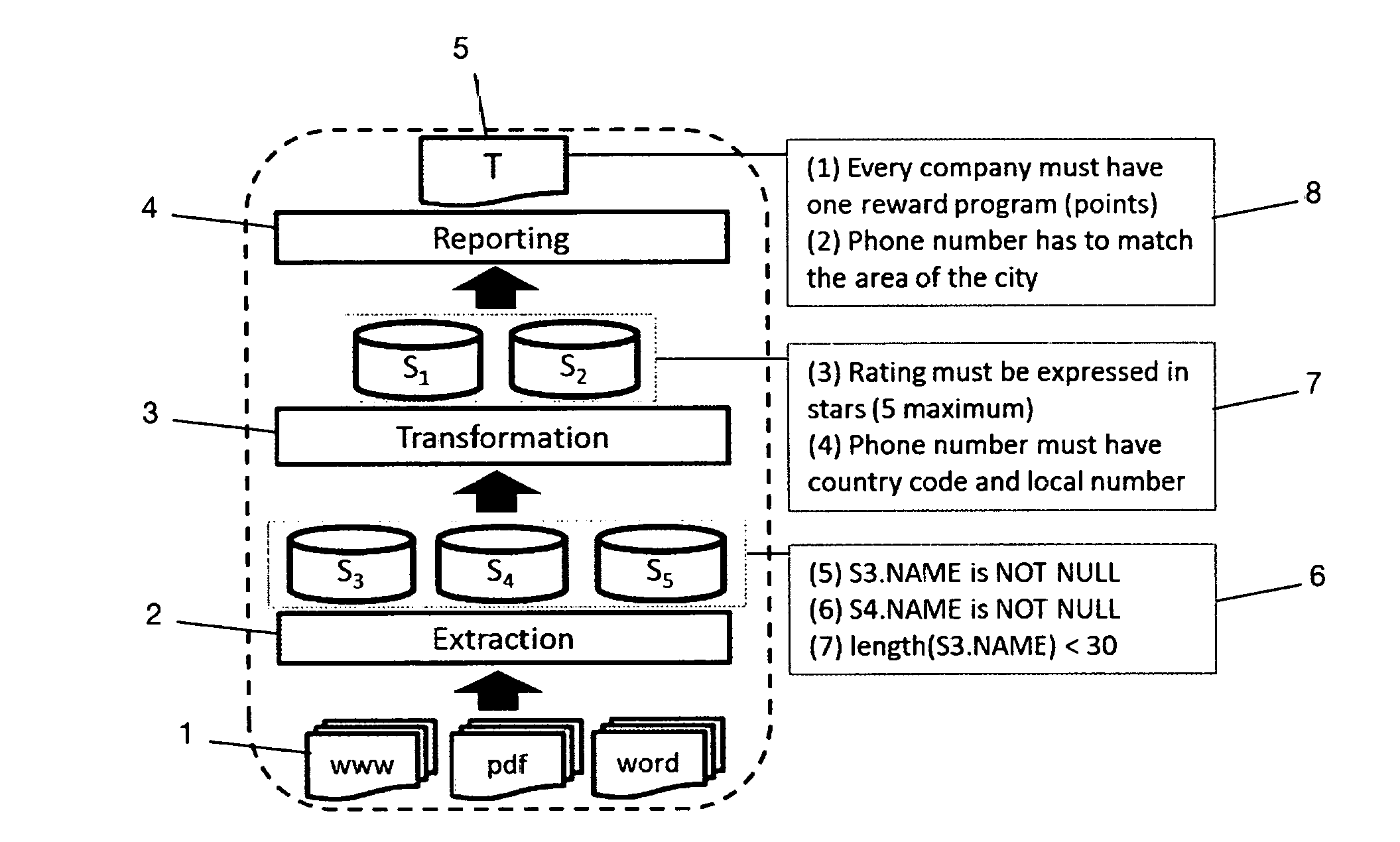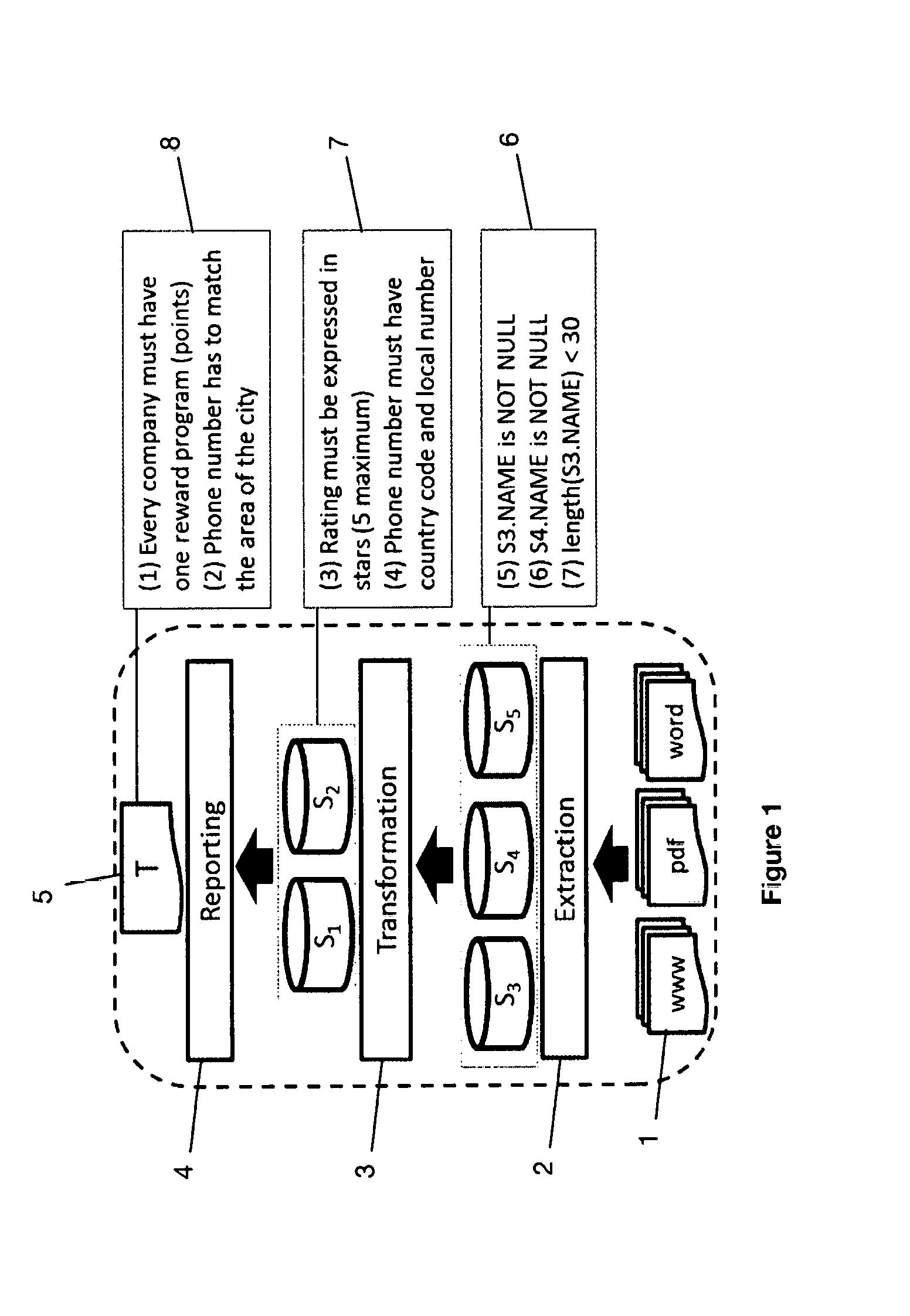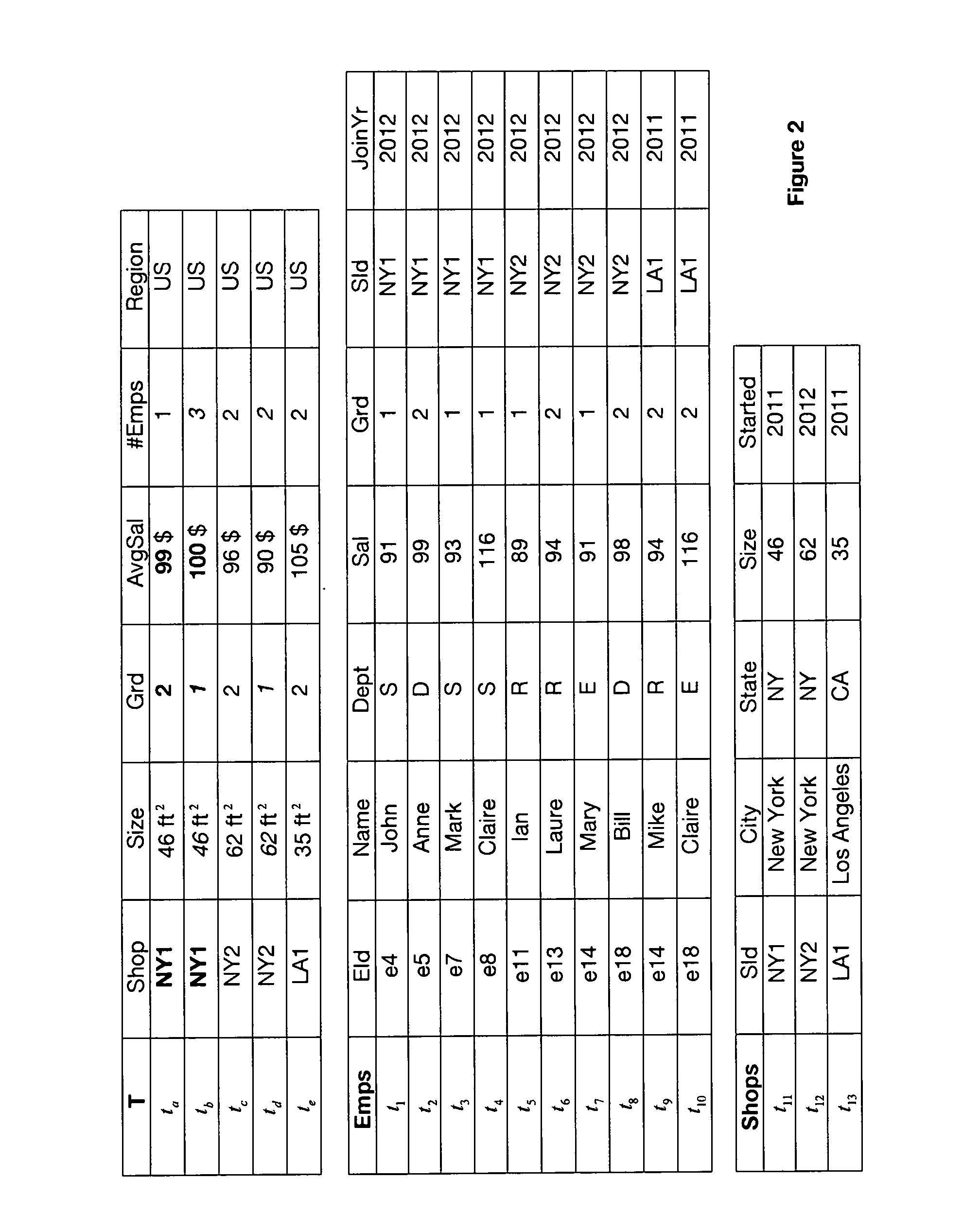System and method for checking data for errors
a data and error detection and data technology, applied in the field of system and method for checking data for errors, can solve the problems of data cleaning system unreliable and inefficient, algorithm must be retrained, and cost to retrain a data cleaning algorithm
- Summary
- Abstract
- Description
- Claims
- Application Information
AI Technical Summary
Benefits of technology
Problems solved by technology
Method used
Image
Examples
example 4
[0085]The rules in the running example correspond to the following DCs (for simplicity we omit the universal quantifiers):
c1: tα.shop=tβ.shop tα.avgsal>tβ.avgsaltα.grdβ.grd)
c2: tα.size>tβ.size tα.#empsβ.#emps)
[0086]The second class includes data validation and check rules expressed with arbitrary declarative languages (such as SQL) and procedural code (such as Java programs). These are specification alternatives to the traditional rules in ΣD. We denote these more general rules with ΣP. Thus, Σ=ΣD∪ΣP.
example 5
[0087]A rule expressed in Java could for example pass to an external web service attributes Size, #Emps and Region to validate if the ratio of the size of the staff and the size of the shop comply with a policy in some legislations of a given country.
3.2 Target Violation Detection
[0088]Given a set of rules Σ, we require that any rule rεΣ has to provide a function detect that identifies groups of cells (or tuples) that together do not satisfy r. We call a set of cells that together violate a rule in the data a violation. We collect all such violations over T w.r.t. Σ in a violation table with the schema (vid,r,tid,att,val), where vid represents the violation id, r is the rule, tid is the tuple id, att is the attribute name of the cell, and val is the value tid.att of that cell. We denote the violation table of a target view T as V(T).
[0089]For DCs in ΣD, detect can be easily obtained. A DC states that all the predicates cannot be true at the same time, otherwise, we have a violation....
example 6
[0094]Given the rules in the running example, their repair functions are the following:
repair(c1): (tα.shop≠tβ.shop)(tα.avgsal≦tβ.avgsal)(tα.grd≧tβ.grd)
repair (c2): (tα.size≦tβ.size)(tα.#emps≧tβ.#emps)
[0095]It is known that the repair problem (even in the simplest setting of FDs only) has NP complexity. However, heuristic algorithms to compute automatic repairs in polynomial time have been proposed. Such algorithms try to identify the minimal number of cells to be changed to obtain a new instance conforming with the rules. More precisely, for a violation table V(T) and the repair functions F=f1, . . . , fn for all rules in Σ, a Repair(V(T), F) algorithm computes a set of cell updates on the database s.t. it satisfies Σ. While we are not interested in the actual updates to get a repair, we consider the cells to be updated by the repair algorithm to be the likely errors.
3.4 From Target to Sources
[0096]We have introduced how violations and errors can be detected over the target. Unfort...
PUM
 Login to View More
Login to View More Abstract
Description
Claims
Application Information
 Login to View More
Login to View More - R&D
- Intellectual Property
- Life Sciences
- Materials
- Tech Scout
- Unparalleled Data Quality
- Higher Quality Content
- 60% Fewer Hallucinations
Browse by: Latest US Patents, China's latest patents, Technical Efficacy Thesaurus, Application Domain, Technology Topic, Popular Technical Reports.
© 2025 PatSnap. All rights reserved.Legal|Privacy policy|Modern Slavery Act Transparency Statement|Sitemap|About US| Contact US: help@patsnap.com



